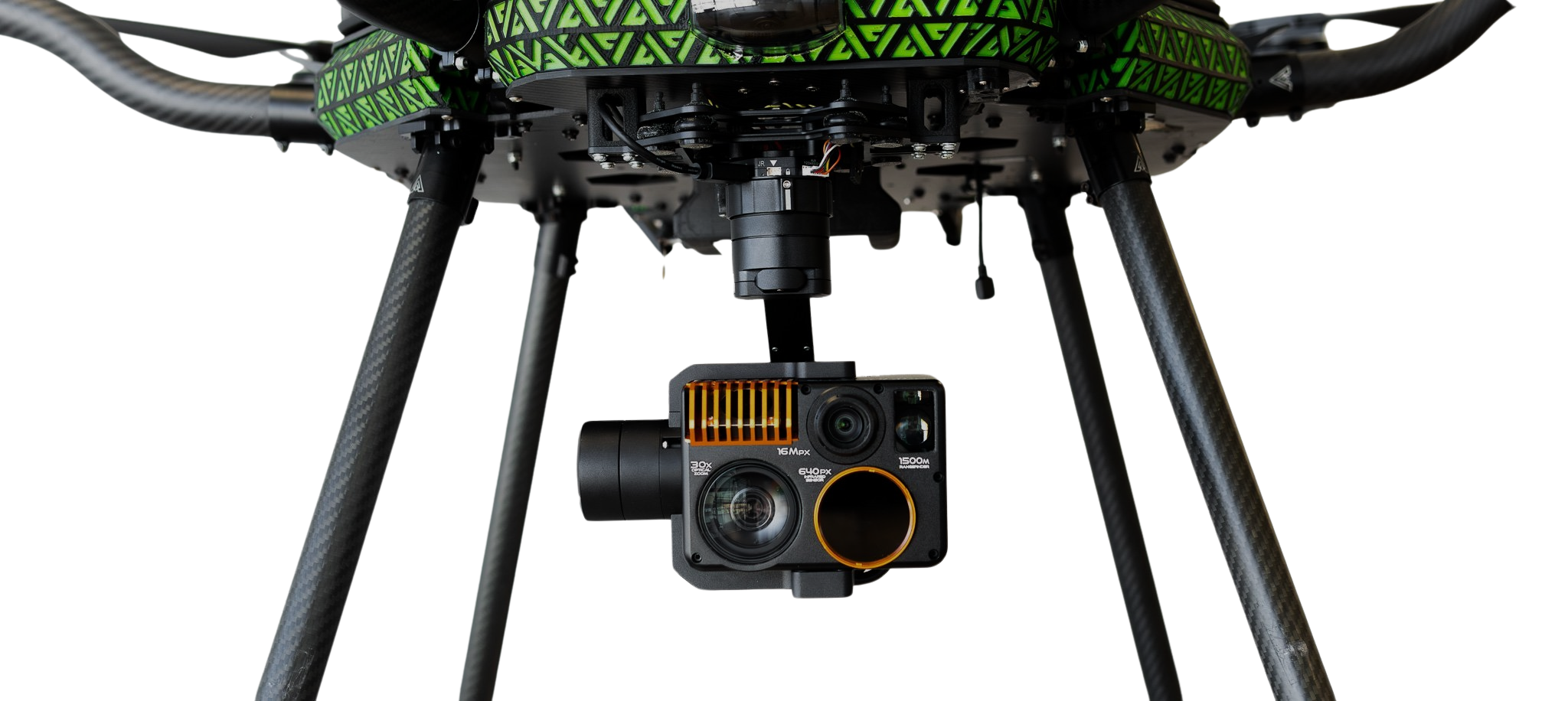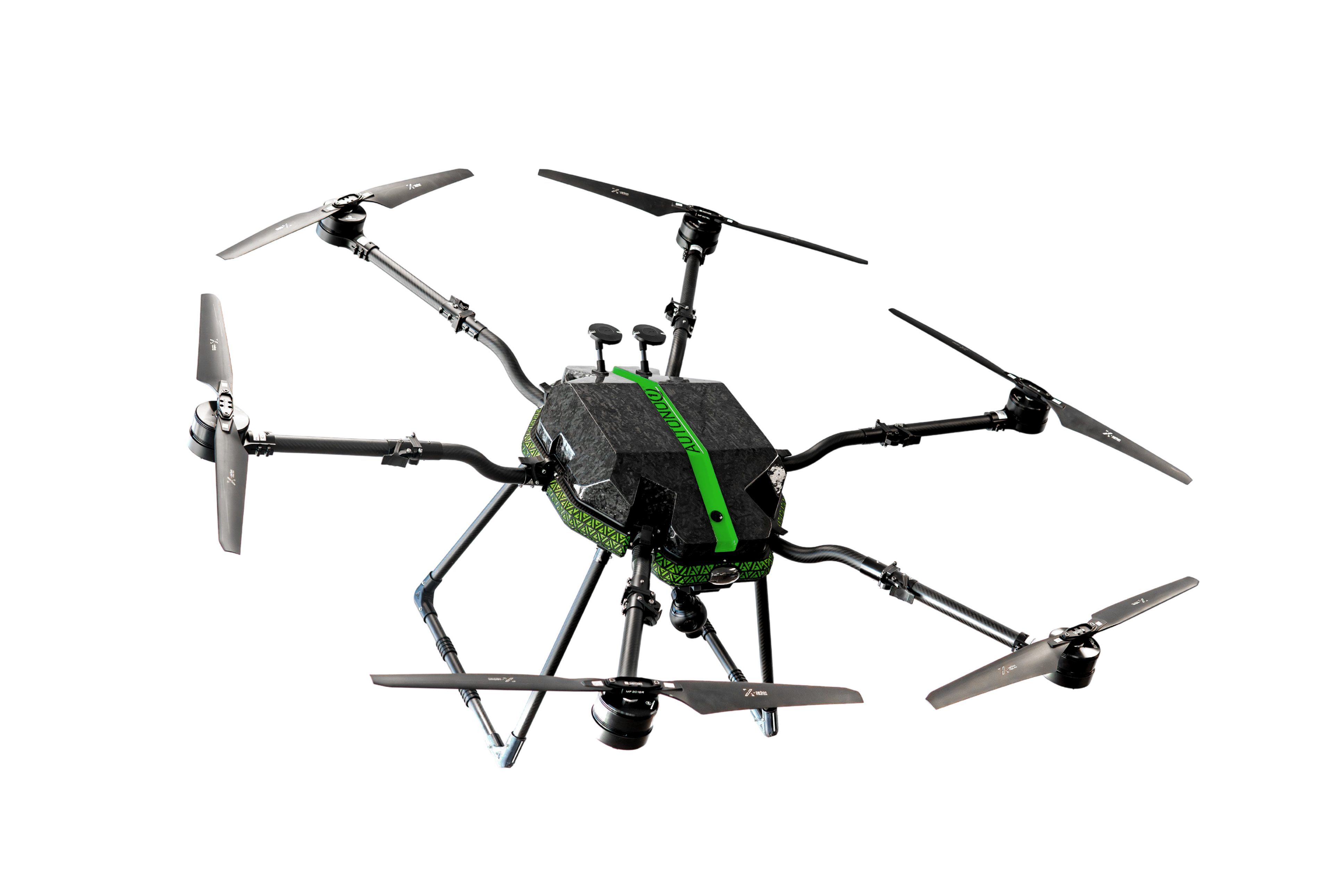How Drones Are Revolutionising Firefighting and Early Fire Detection
Publish 31 July 2025
By: Lethu Soka
ExpertiseThe Wildfire Crisis Is Growing - So Is the Technology to Stop It
Wildfires aren’t just seasonal hazards anymore - they’re becoming one of the most destructive forces facing our planet. South Africa is right in the firing line, over 60% of our landscapes from the fire-prone fynbos of the Western Cape to the grassy savannas of Limpopo, are vulnerable to runaway flames. These fires devastate homes, ecosystems, and communities. While courageous firefighters risk their lives on the front line, the tools they've relied on haven’t evolved fast enough to match the growing threat. Until now.
Introducing Autono1: The Drone That’s Changing the Game
Autono1 isn’t just another drone, it’s a fully autonomous fire-fighting force in the sky. Developed by AutonoSky, this advanced hexacopter is equipped with:
- The Workswell WIRIS Enterprise thermal camera, for pinpoint early detection
- The Flame-Shield fire-retardant payload system, capable of dousing up to 30 square metres per drop
- A mission: to detect and suppress fires faster, safer and more effectively than ever before
Why Traditional Firefighting Falls Short
South Africa spends billions of rand each year battling wildfires (CSIR, 2023). Traditional firefighting methods are increasingly strained under the pressure of climate-driven fire seasons:
1. Manned Aerial Operations - Costly and Dangerous
- Expensive: Helicopter deployments can cost between R50,000–R200,000 per hour
- Risky: Pilots and crew face smoke, heat, and volatile flying conditions
- Inaccessible: Many rural or mountainous regions lack regular aerial coverage
2. Ground Crews - Brave, But Exposed
- Despite intensive training, firefighters are still exposed to life-threatening scenarios, from wind-whipped firestorms to collapsing burn zones
3. Delayed Detection Results In Disaster
- Only 30% of wildfires are identified within the critical first hour (CSIR), giving flames time to spread uncontrollably

The Autono1 Advantage: Drones That Think, Detect and Defend
1. Early Detection with Thermal Intelligence
With the WIRIS Enterprise thermal camera, Autono1 can detect heat signatures through smoke, fog and total darkness - making it ideal for spotting hidden fires in dense vegetation or remote regions long before they become visible to the naked eye.
2. Targeted Fire Suppression with Flame-Shield
Autono1 combines high payload capacity with hexacopter stability, enabling it to drop fire retardant balls accurately and consistently, even in gusty and unstable conditions, making it:
- 10 times more cost-effective than helicopter deployment
- Zero risk to human life
- Ideal for inaccessible or high-risk zones
3. Live Coordination and Intelligent Response
Autono1 delivers real-time HD and thermal video to ground teams, improving on the ground coordination.
- Inform evacuation planning
- Pre-position crews based on threat
- Navigate dangerous areas with confidence
4. Proactive Prevention, Not Just Reaction
Firefighting should start before the flames appear. That’s why Autono1 also plays a key role in prevention:
- Pre-season patrols identify dry fuel build-up, illegal burns and high-risk zones like Table Mountain
- Post-fire assessments ensure no embers reignite, helping prevent secondary flare-ups

The Future of Firefighting Is Here - And It Flies!
We’re at a turning point where autonomous drones like Autono1 offer an agile, cost-effective and safe solution to a problem that’s only growing. This isn’t just a new tool, it’s a paradigm shift in wildfire management.
With the combined power of thermal vision and precision payloads, Autono1 is helping South Africa move from reactive firefighting to intelligent, data-driven fire defence.
We’re not just fighting fires. We’re staying ahead of them.
Join the Revolution!
AutonoSky is leading a new wave of innovation in wildfire management. Whether you’re a government agency, private landowner or conservation organisation, now is the time to rethink how we protect our land, our people and our planet.
References:
- Council for Scientific and Industrial Research (CSIR), 2023
- SANBI Report on Invasive Plants and Fire, 2023
- Working on Fire Aerial Operations Data
- AutonoSky Manufacturing, 2024
Other interesting articles

How drones are used in agriculture
The United Nations is projecting that the world’s population is expected to reach 9 billion by 2050… Read more about How drones are used in agriculture
By: Jordan
12 October 2022
Expertise
How infrared sensors enhance situational awareness
Computer vision is becoming an increasingly important capability, not only in the aerial solutions … Read more about How infrared sensors enhance situational awareness
By: Aidan
26 January 2023
Expertise
How drone technology fosters sustainability
Over the past few years, commercial drone applications in various fields have rapidly increased. Th… Read more about How drone technology fosters sustainability
By: Adam
21 April 2023
Expertise


Request a Call
Leave your details below and we will give you a call
Contact Us
Drop us a message, or check out our footer for more contact information
